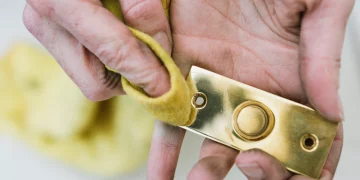No matter the size of your home and the materials used to construct it, a properly insulated attic is an excellent consideration to embrace. If you search for Clean Air Doctors who are the best insulation specialists near me, you’ll find that the many types of attic insulation available confuse most people when finding their best fits for their needs. However, regardless of your home’s size, materials, and other factors, including your budget for energy bills, this guide for the best types of attic insulation will help you settle for the best fitting for your demands.
The priority consideration to consider when looking for the best attic insulation
Before settling for any attic insulation option, the first consideration to embrace is determining the R-value of such insulation. The R-value is the material’s capacity to resist the transfer of heat gains and losses. Based on your attic insulation’s R-value, you’ll be able to determine the following:
- The type of attic insulation materials you need,
- their thickness,
- density and where and how to install them.
Generally, the higher your attic R-value, the better for trapping heat flow and keeping your space heated and cooled. When properly insulated, you can adequately use your attic as a sauna in summers and an iceberg in winters.
The different types of attic insulation materials to embrace for the best attic insulation
Although the R-value determines the best attic insulation you need, understanding the best types of attic insulation available helps you settle for the one that perfectly fits your demands. Some of those best types to select for include:
- Fiberglass
Unlike others, fiberglass is the best attic insulation material for good reasons. Fiberglass is easy to install. It’s also cheap and highly accessible. The same also doesn’t shrink over time and is resistant to fire and other attic damaging elements. Still, unlike other attic insulations materials, fiberglass is an excellent consideration, especially if your home is prone to insect infestation because they can hardly build nests or nibble on it. These insulators, unlike others, slow the spread of cold, heat, and sound in any structure. The insulators do this by trapping air into pockets keeping your space warm in winters and more relaxed in summers. Fiberglass insulators come from molten glasses spinning into fibers during the coating, turning them into liquid binders. The fibers then break down into shorter pieces increasing their ability to enhance cooling and heating effects within your space.
- Cellulose
Cellulose comes from either recycled papers or wood, making it the best environmentally friendly option you’ve got. Bides being excellent attic insulation for your home, Cellulose is an inexpensive option considering you’ll make it from recycled waste materials. Also, when properly installed and treated with boric acid, Cellulose becomes more resistant to fires, repels damaging organisms like insects and rodents, plus rejects the growth and development of mold and mildew.
Also, when treated with an acrylic binder, Cellulose is an excellent attic insulating material since it prevents the degeneration of your attic’s R-value over time. Cellulose is also a superb attic insulating material because of its superior coverage. It’s compacted with vital components within its wall cavities, hence minimizing air leakage and infiltration. When this happens, it reduces heat loss and easily converts lost air currents into valuable air for cooling and heating your space. On top of that, Cellulose insulators also contain higher performance values than others considering they come from dense elements that outperform fibrous insulators hence encouraging a more fantastic energy cost saving.
- Mineral wool
If you’re a resident of places like the United States, Canada, and Europe, mineral wool is your best option for attic insulation material. It’s best in these and more areas for reasons including:
- Highly resistant to fire
Unlike other materials, mineral wool doesn’t burn until it reaches a burning point of over 18,000 degrees Fahrenheit. Therefore, if you experience a worst-case scenario like a house fire, attic insulation with mineral wool can protect your house from burning until rescue arrives.
- It’s highly resistant to water and moisture
In addition to being highly resistant to fire, mineral wool is also water-resistant. It means your home will continuously benefit from insulation even in the worst moisture leaks or severe water damages. Again, mineral wool is hugely beneficial, especially for its soundproofing abilities. The material effectively blocks, preventing the entry of destructive noises in your house.
Different types of attic insulation and the best option among them
- Batt insulation
Batt is the best type of insulation to embrace mainly because its fibers are held in adhesive binders acting as vapor barriers hence efficiently cooling and heating your space. Batt is also a combination of fiberglass and mineral wool and is among the best insulating materials for attic insulation.
- Blown-in insulation
Also referred to as loose-fill insulation, blown-in is the second-best attic insulation you have, considering it comes with packaged airbags to control heating and cooling air within your space. It also contains fiberglass, mineral wool, and cotton, making it a perfect insulation option regardless of the current weather condition.
















